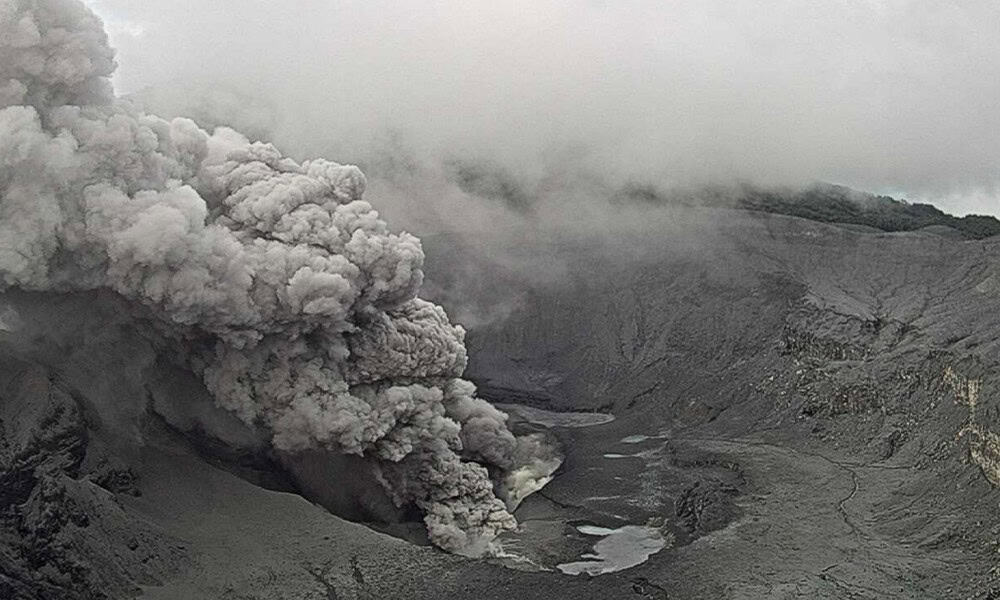The ongoing eruptions of Poás Volcano have triggered health concerns for the community of Grecia and nearby areas like Sarchí, Alajuela, and San José, where a Green Alert remains in place for seven areas. The Laboratory of Atmospheric Chemistry at the National University (UNA) reported that early Wednesday morning, Grecia experienced its longest period of toxic air to date, lasting from midnight to 2 a.m., surpassing a prior one-hour episode. Using advanced sensors, UNA and the Volcanological and Seismological Observatory (OVSICORI) continuously monitor air quality and seismic activity to inform public alerts.
Authorities warn that the air in Grecia is often unsafe to breathe due to high levels of sulfur dioxide (SO₂) and volcanic ash, which can cause allergies, eye irritation, and respiratory issues, particularly in children, the elderly, and those with asthma or heart conditions, with prolonged exposure risking chronic health problems. The National Emergency Commission (CNE) has issued a Red Alert for Poás Volcano National Park, urging residents to wear N95 masks, stay indoors, and close windows to minimize exposure.
“The Poás Volcano maintains a constant emanation of gases and ash, with air quality levels ranging from moderate to severe,” said José Pablo Sibaja, an expert from UNA’s laboratory. The “severe” classification, recorded in San Luis de Grecia, indicates highly hazardous conditions. Beyond health risks, ashfall has damaged coffee crops and pastures in Grecia and Sarchí, while park closures have caused over 60% revenue losses for local businesses, particularly tour operators.
Sibaja explained that the toxic air resulted from a synergistic effect, with ash and sulfur dioxide accumulating in the atmosphere. “This was reflected in the air people were breathing, and it led to irritation, discomfort, and even difficulty breathing,” he noted. Residents in Grecia are coping by closing windows, dampening ash to reduce dust, and wearing masks, though many report disrupted routines and respiratory irritation, according to local accounts.
Authorities have alerted rescue and emergency teams to respond to the crisis. Poás, active with 40 eruptions since 1828, has seen intensified activity since March, driven by seismic swarms and a shrinking crater lake, escalating gas and ash emissions.
Volcanologist Geoffroy Avard of OVSICORI reported that Poás continues to emit gases and ash, with recent measurements showing high outgassing: between 600 and 5,000 tons per day of sulfur dioxide, reinforcing air quality alerts in Grecia and surrounding areas. “We are still seeing a continuous emission of ash that rises only about 100 meters, with frequent pulses recorded on seismographs,” Avard explained.






